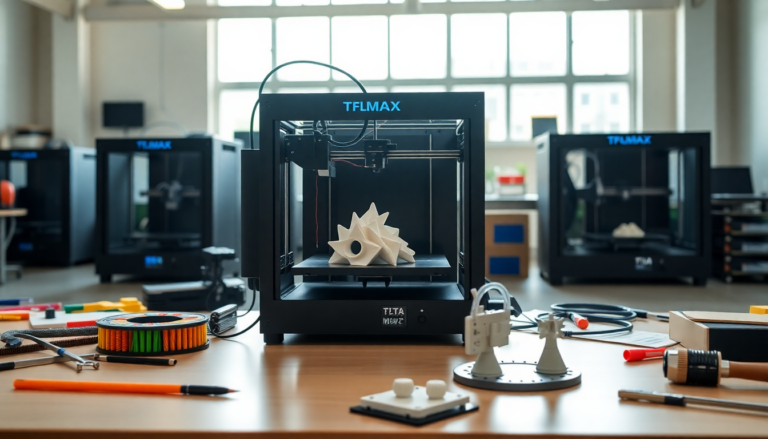Argomenti trattati
In the fast-changing world of 3D printing, FLSUN is making waves with their latest creation: the T1 MAX delta printer. Designed with print farms in mind, this innovative model is packed with features aimed at boosting both speed and reliability. If you’ve been following FLSUN’s journey, you might be curious about how this printer stacks up against its predecessors. Let’s dive into what the T1 MAX has to offer!
Market Overview and Key Features
The T1 MAX delta printer is marketed as a powerhouse for high-volume printing tasks. With a generous build area of Φ300×297mm³, it can take on substantial projects while keeping its footprint manageable. Plus, its open-frame design means easy access to essential components, making maintenance and upgrades a breeze. For those needing a workhorse that can run 24/7, this printer could be a game changer.
Among the standout features, the T1 MAX comes equipped with a 300°C hot end, a 100°C heated bed, and a hardened steel nozzle. This setup allows it to handle a variety of materials, including high-speed PLA. The textured PEI-coated build plate is another highlight, enhancing adhesion to keep prints secure throughout the process. And let’s not forget the CPAP-style blower for cooling, which promises to deliver a quieter operation compared to earlier models.
Performance Metrics and User Experience
One of the bold claims from FLSUN about the T1 MAX is its ability to achieve printing speeds of up to 1000mm/s with acceleration rates of 30,000mm/s². While seasoned users might raise an eyebrow at these numbers, they certainly illustrate FLSUN’s ambition to push the envelope in 3D printing technology. Of course, it’s wise to take these figures with a grain of salt, as manufacturers often highlight idealized performance that might not align with real-world usage.
When it comes to user experience, the T1 MAX shines with its focus on accessibility and functionality. Improvements in bed leveling and first-layer adhesion are crucial for achieving consistent print quality, and FLSUN seems to have addressed these areas effectively. Plus, the printer supports open-source software, which can lead to better compatibility with various slicers—goodbye to the headaches faced by users of earlier models!
Investment Potential and Future Outlook
Entering the market at an appealing price of $479, the T1 MAX is significantly more affordable than some high-end models, like the FLSUN S1. This price point is likely to attract businesses eager to expand their capabilities without breaking the bank. However, it’s important for potential buyers to note that the T1 MAX doesn’t include some high-end features found in pricier models, such as built-in filament drying systems or advanced monitoring cameras.
As the 3D printing sector continues to grow, the need for reliable and efficient printers is only set to rise. With its blend of speed, ease of maintenance, and cost-effectiveness, the T1 MAX is well-positioned to meet the demands of this expanding market. For print farms and other high-demand environments, it could represent a valuable investment opportunity—assuming it performs as expected in real-world applications.
In conclusion, while the T1 MAX still awaits comprehensive testing, its promising specifications and user-friendly features make it a model to keep an eye on. The balance of affordability and performance could establish it as a significant contender in the 3D printing arena, especially for those looking to optimize their print operations. Are you ready to see what the future holds for this exciting technology?

